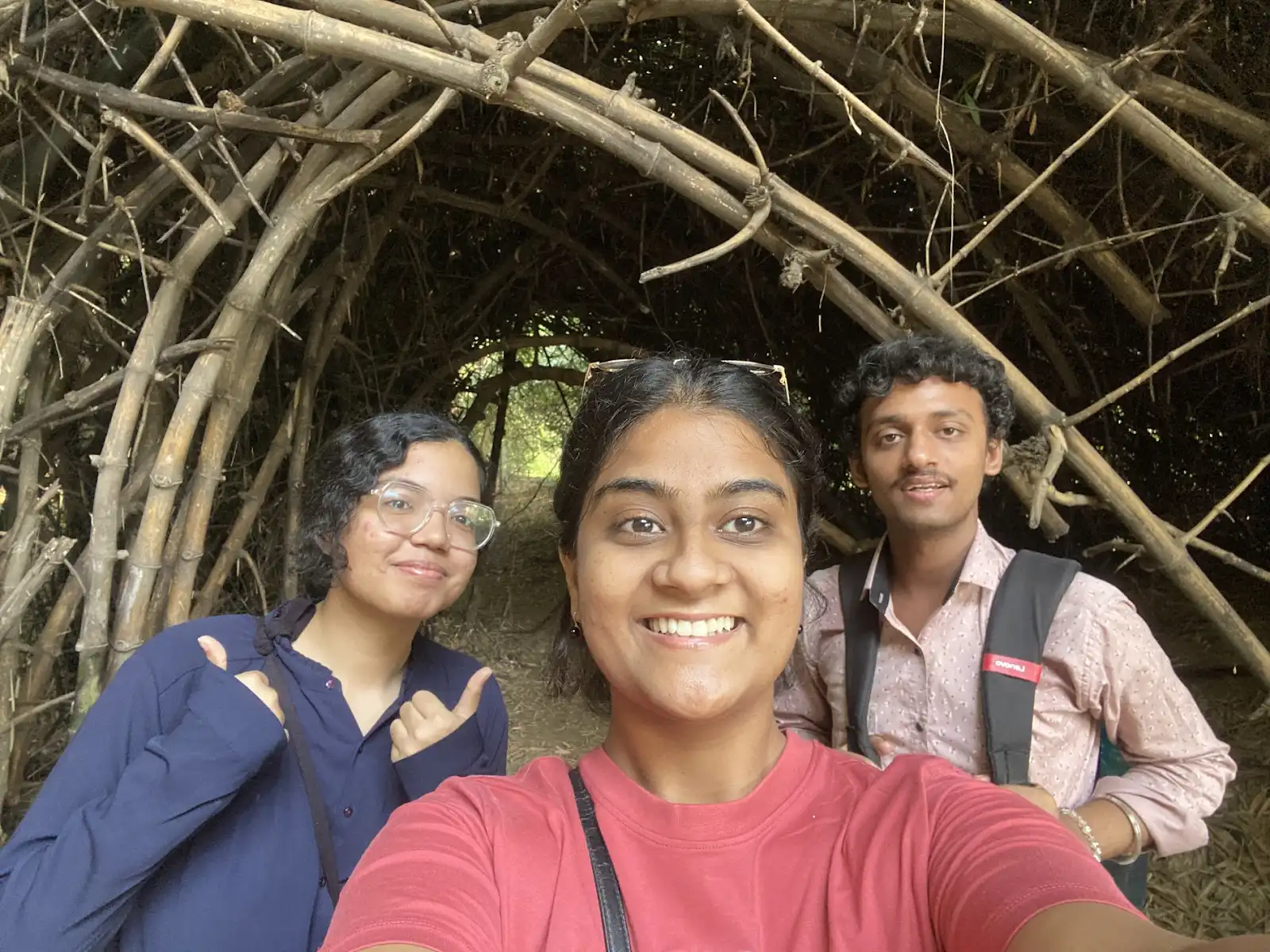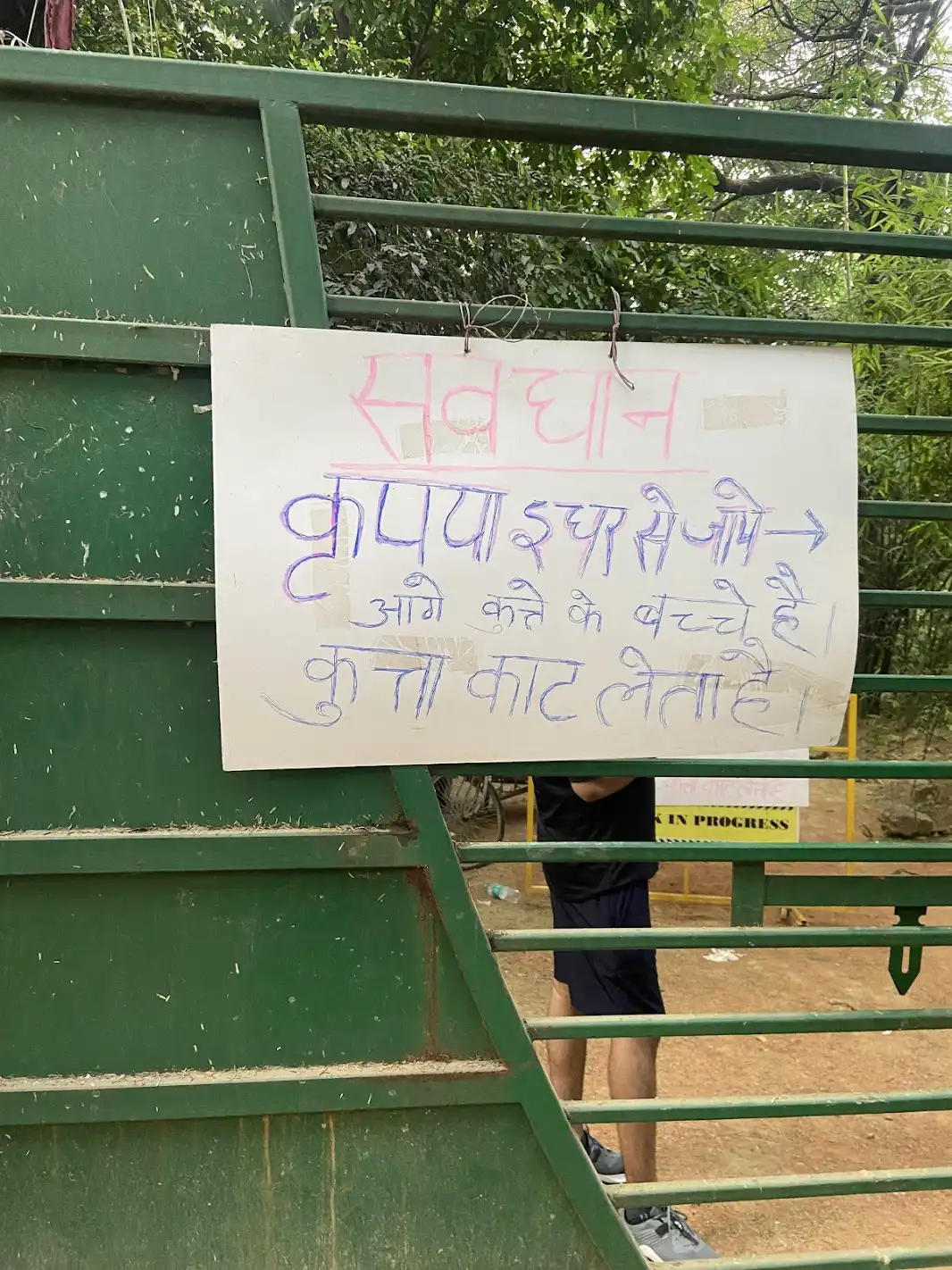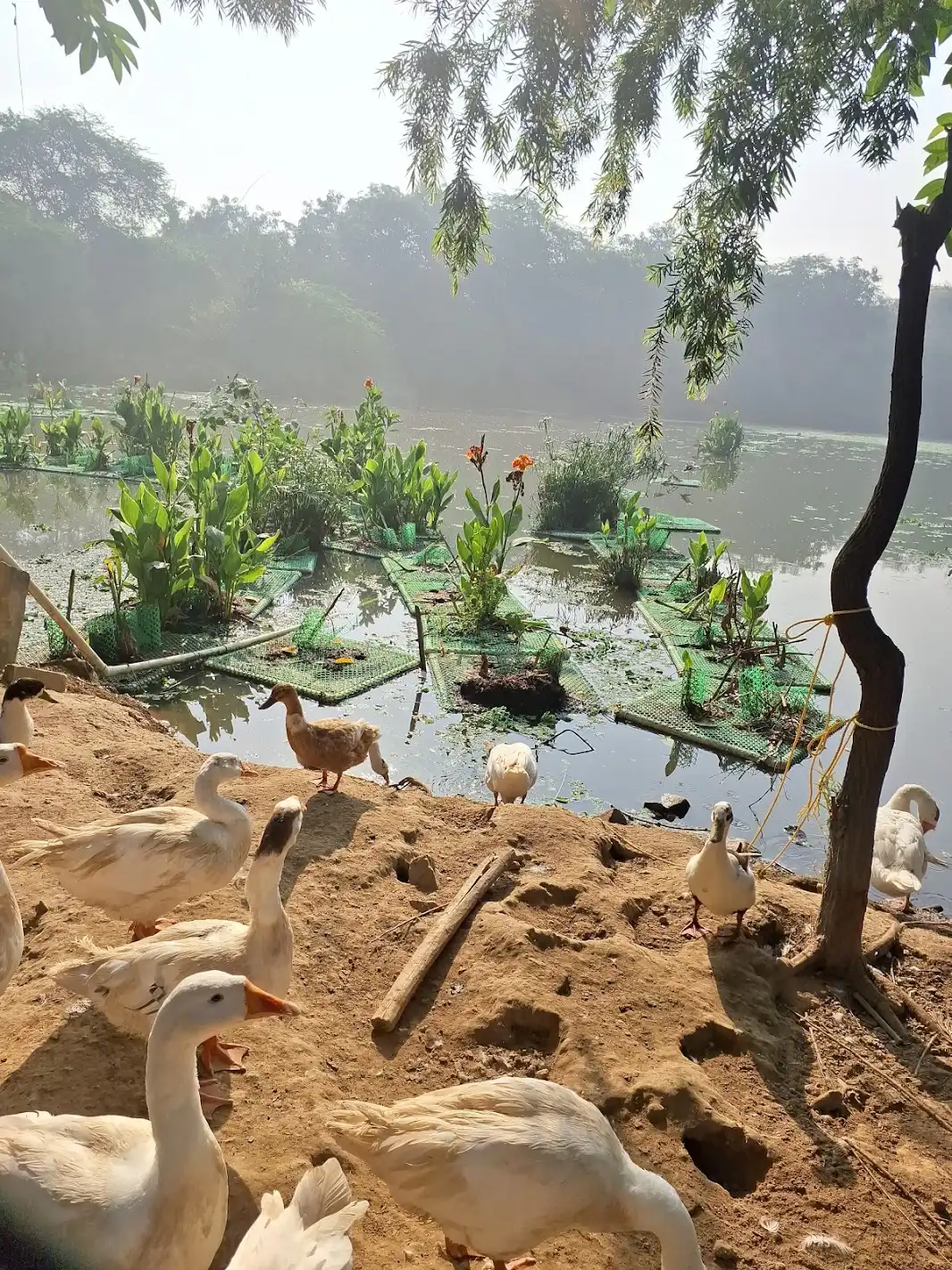Tales from Sanjay Van: A Forest Walk in Delhi's Heart
There Is No Earth B Team Visit to Sanjay Van Reserved Forest
It was a beautiful Sunday morning, and our There Is No Earth B (TINEB) team was planning to conduct an exploratory recce in Sanjay Van, a forested area on the outskirts of Delhi. Known for its tranquility and diverse flora, Sanjay Van is supposed to be an exciting place for a group of students studying in Delhi and eager to dig out the heart of this urban jungle. Bhawna, being one of the early birds, managed to reach the meeting point sharp by 7:30 AM, setting the pace for the day. Meanwhile, it was meant to be in the morning rush, wherein Sampriti and I are finding ways to get there on time. To make things worse, we are a bit delayed; yet, because of hard work, we still managed to push off our adventure right on time by 8 AM.

Volunteers of There Is No Earth B
We entered through gate no. 3, and on the way, we were amusingly greeted with a sign warning "Don't go this way, there are puppies."Not to judge the whimsy of the start, we could not but laugh at the puniness of it all. As one went deeper into Sanjay Van, one became oblivious to the world outside it. All that was around was the calm noises of chirping birds and rustling leaves.

The signboard that made all of us laugh (Translation: take this path; there are puppies ahead, and the dog may bite)
The expansive cover of the forest captivated us right away. What really struck my attention was the beautiful Tyndall effect—sunlight rays piercing through the canopy, creating an ethereal pattern on the walkways. It was as if we were walking through nature's own light show, where beams of sun danced on the forest floor, casting long shadows and lighting the way ahead. The play of light and shadows beautifully transformed the forest into a fairyland walk, making the very experience enchanting.
Even with its natural beauty, there existed an overall lack of maintenance in Sanjay Van. The silence of the forest, otherwise more of an attraction, it seemed to me, indicated a poor maintenance culture. There was no loud noise, yet there was no regular service or even basic facilities and maintenance. I could not understand what force was behind the efforts made to convert this luscious forest into a park. Delhi already has a number of parks, and converting this wild habitat into another park seemed redundant. The actual spirit of a forest actually lies in their wild and untamed nature, quite contrary to the nature of urban parks that are all manicured and maintained.
While strolling down, we came across several minor construction work. One such thing we saw was a good well being converted into a structure with roofing. While it was meant as preservation and beautification, the extension appeared crowded among the untamed glory of the forest. Some monument-type constructions were under repair, with bamboo notching through the pathways for visitors. These pathways did not seem to be of much use and even interfering slightly because the beauty of Sanjay Van lies in its organic paths.
It was way cooler inside than it was outside. Above, the sun shone bright; however, somehow the forest created an atmosphere of cool and refreshing conditions. We found a couple of water bodies, under glitter, with shimmering surfaces on them. Many of them had a layer of foam on top. That was the reason they could remind me of challenges caused by pollution even in such green spaces. Yet they were marvelous for adding to the forest's charm, supporting forms of life and adding to the biodiversity of the forest.
We also learned some of the water plants that we walked past. It was really interesting to see just how much water could have such an enduring and pliable piece of nature, especially so urban. The interaction of all sorts of plants from that entire spectrum that contributed to the forest ecosystem in general showed just how diverse the forest was.
One comical moment which really was memorable for me was when we ran into a gaggle of ducks. We saw a man feeding them bread, and hilariously, all the ducks began swaying their heads in perfect coordination with each other, as if they were performing some sort of choreographed dance. The whole scene was so funny that we could not but laugh at what we were seeing. But it did bring to mind at least one question: do ducks really eat bread? Although people commonly feed bread to ducks, there isn't much healthy nutrition in it.

Ducks of Sanjay Van Reserved Forest
Our two-hour trek looked like a journey to another world, one so far from the hustle and bustle of city life. The forest, despite all its management issues, was a sanctuary that flowed with peace and natural beauty. The Tyndall effect, the cooling temperature, the water bodies, and the charming ducks-all these just combined into an unforgettable experience.
It was that day, while we ended the recce and started moving back. Nothing but the thought did strike us that such a natural area should be so preserved in its pristine natural look. Sanjay Van, sprawling with area and manifold varied ecosystems, needs to remain a forest, for that is exactly the place where nature's vigorous and wild elements can run free without the impositions of urban development. The wild, untamed character of the forest is what makes it charming, and this is what needs to be preserved for generations to come.
The recce we did at Sanjay Van was as much a reminder of the touch-and-go between nature and human interaction. It underlined the fact that natural habitats should respect and not go forth seeking to protect themselves but let them flourish in their own right.
And so, I departed with a couple of serene pictures: ducks at play and sunlight filtering through the trees—perfectly beautiful reminders of the wonders of nature in the heart of the city.
By Adarsh Seema Singh, 2nd year Political Science Student ARSD College, University of Delhi (Written on 22nd October 2024)
